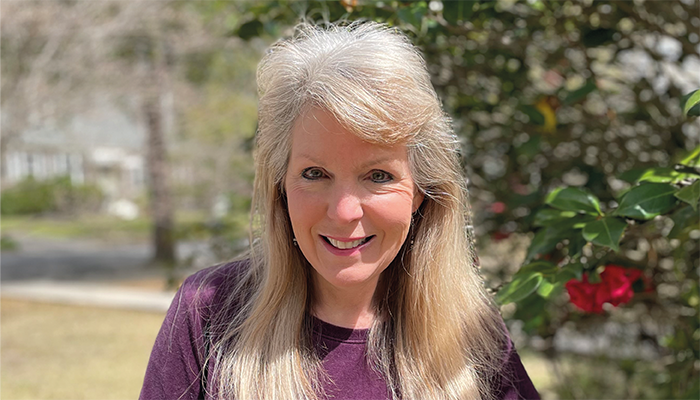Back in 2019, Susan Richardson, Arthur Sease Williams Professor, Department of Chemistry & Biochemistry, University of South Carolina, USA, wrote a feature for The Analytical Scientist discussing her work on disinfection by-products (DBPs) – and the threat they pose to our health, wildlife, and environment.
We recently connected with Susan to see where this research has taken her over the past few years, what she’s mostly concerned about today, and how environmental analysis can progress in the near future.

Susan Richardson
What is the biggest analytical challenge in environmental research today – and how do you believe we can overcome it?
Identifying unknown contaminants, whether in drinking water or environmental surface waters, remains as our biggest environmental analytical challenge. It is much harder to identify new contaminants than those we already understand, and they are more likely to be found at very low levels in a sea of contaminants – it's like looking for a needle in a haystack!
Effect-directed analysis (EDA) is a valuable method for pinpointing harmful contaminants causing toxicity effects. However, it takes a great deal of time and effort, which discourages many groups from using it. There are several examples of EDA’s effectiveness, such as the discovery of 6ppd-quinone harming coho salmon in the Northwest US (1) and a new algal toxin affecting bald eagles in the Southeast US (2).
Which environmental contaminant are you most concerned about today?
Despite having worked in various now-mainstream areas of environmental analysis, from microplastics to PFAS, I’m still most concerned about DBPs. This is because they’re typically found at ppb levels (1,000 times higher than PFAS) and a body of evidence states that they cause serious effects to human health – such as bladder cancer, miscarriage, and birth defects. For example, dibromoacetonitrile – one of the emerging, unregulated DBPs – is carcinogenic in two animal species and often seen in drinking water at ppb levels (3).
What updates can you share about your work with DBPs?
In 2022, we published our new discovery on an important class of DBPs that weren’t known before: halocyclopentadienes. We found these DBPs in real chlorinated and chloraminated drinking water using a very sensitive GC-MS instrument (4). I was especially surprised by two aspects of this research. Firstly, this class is the first to be bioaccumulative; secondly, hexachlorocyclopentadiene is now the most cytotoxic DBP known. These six new DBPs were found completely by accident by a PhD student in my lab, Jiafu Li, who spotted the new peaks and figured out what they were. As always with analytical science, important discoveries seem to appear when you least expect them!
Additionally, in a recent Environmental Science & Technology publication, we applied EDA to assess different size fractions of DBPs and determine which are most important toxicologically (5). We discovered that DBPs over 5000 Da molecular weight are not toxic – validating a statement made by a prominent toxicologist at a conference I attended. The most toxic fraction was <1000 Da, challenging the common focus on larger fractions in previous research.
How important is mass spec to your work?
Hugely important! Mass spec is the most important tool in our arsenal thanks to its high sensitivity and ability to handle complex mixtures. For me, it’s the most important tool in environmental research because we can use it to identify new contaminants, quantify contaminants, and so on. If NMR was this sensitive and could handle mixtures, maybe we’d veer away from mass spec. But as it stands, mass spec remains on top!
Is there anything missing from the analytical toolbox for environmental analysis?
Some people in the field have started using supercritical fluid chromatography (SFC)-MS. Only time will tell if this fills an important niche. One thing we’re missing is an automatic process for testing toxicity of collected prep-LC-MS fractions. As other areas of analytical chemistry begin to use AI, maybe environmental research should take inspiration to push EDA into the future.
Any advice for the next generation of analytical scientists working in environmental analysis?
There’s so much to discover and do – newly emerging analytical scientists have a wonderful opportunity to make a difference in human and environmental health. Alongside grasping every opportunity that presents itself, it’s crucial that you don’t give up! There’s always pitfalls, but with collaboration and determination, you will achieve exciting results.
What are your hopes for the future?
I’m hopeful that as the field evolves, we will identify important new contaminants that allow us to draft solutions to minimize human and ecological exposure.
Credit: Supplied by Interviewee
References
- Z Tian et al., Science, 371, 6525 (2020). DOI: 10.1126/science.abd6951.
- S Breinlinger et al., Science, 371, 6536 (2021). DOI: 10.1126/science.aax9050.
- JM Allen et al., Environ Sci Technol, 56, 1 (2022). DOI: 10.1021/acs.est.1c07998.
- J Li et al., Environ Sci Technol, 56, 16 (2022). DOI: 10.1021/acs.est.2c02490.
- H Dong et al., Environ Sci Technol, 57, 47 (2023). DOI: 10.1021/acs.est.3c00771.




